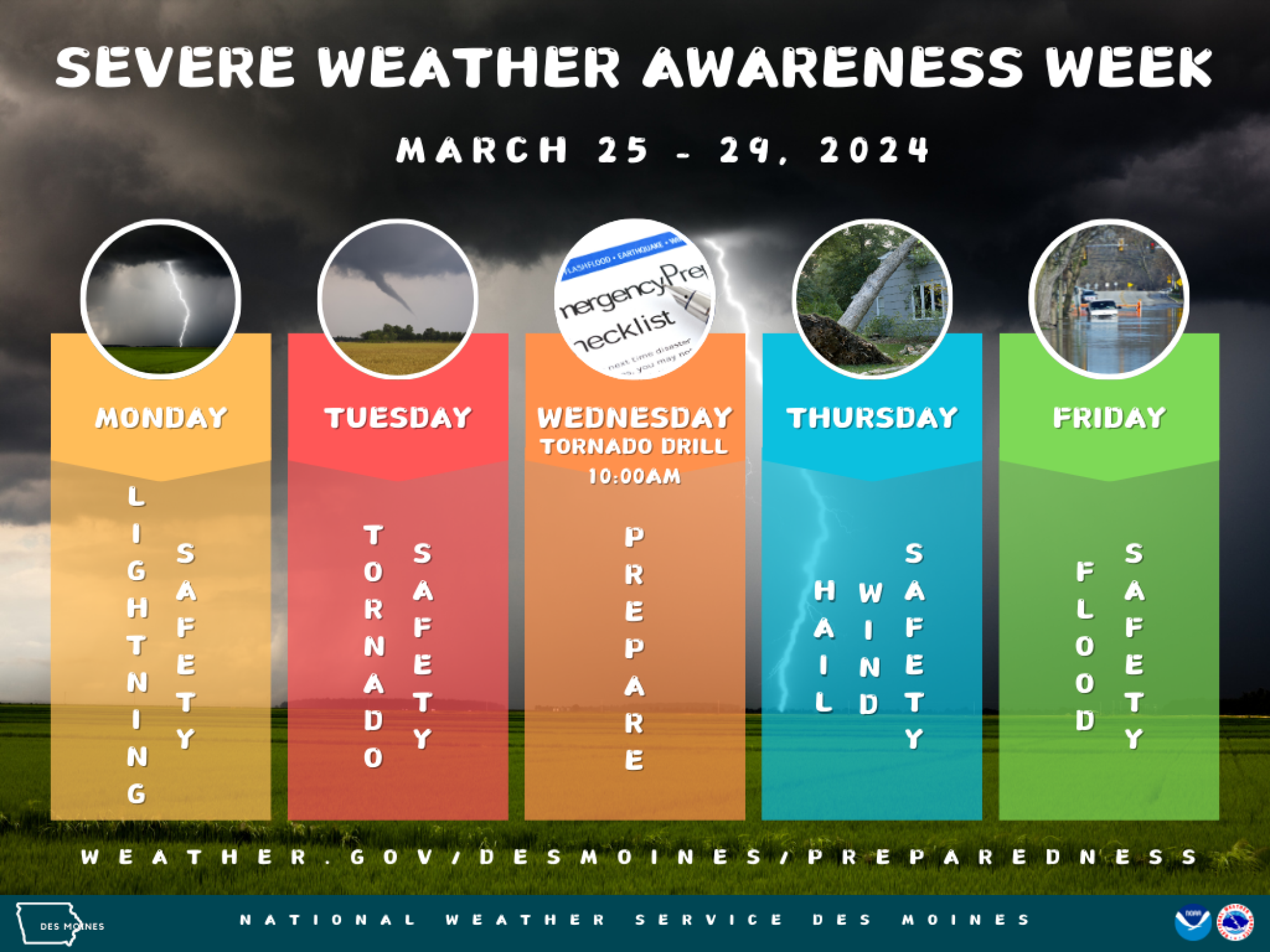Get Ready Kentucky: National Weather Service's Severe Weather Awareness Week Plan

Table of Contents
Understanding Kentucky's Severe Weather Threats
Kentucky faces a diverse range of severe weather threats throughout the year. From the violent tornadoes that can touch down unexpectedly to the devastating floods that can inundate entire communities, understanding these risks is the first step towards preparedness. Let's examine the specific challenges we face:
-
Kentucky Tornadoes: Kentucky experiences an average of 10-15 tornadoes annually, although some years see significantly more. These twisters can cause catastrophic damage, highlighting the necessity for robust tornado safety plans.
-
Kentucky Floods: The state's geography makes it susceptible to flash floods, especially in western and central Kentucky along major river systems. Heavy rainfall quickly overwhelms drainage systems, leading to rapid rises in water levels. Areas near the Ohio and Mississippi Rivers are particularly vulnerable.
-
Kentucky Severe Thunderstorms: Severe thunderstorms, often accompanied by damaging winds, large hail, and torrential rain, are common throughout Kentucky, primarily during the spring and summer months. These storms can develop quickly and unexpectedly.
-
Kentucky Winter Storms: While less frequent than other severe weather events, winter storms can bring significant challenges, including heavy snowfall, freezing rain, and dangerously cold temperatures leading to power outages and hazardous travel conditions.
Building Your Emergency Plan: Before the Storm
Proactive planning is your best defense against severe weather in Kentucky. Don't wait until the sirens wail; prepare now to protect yourself and your loved ones. Here’s how:
-
Develop a Family Communication Plan: Establish a meeting place and designate an out-of-state contact person who can act as a central point of contact for family members.
-
Create a Go-Bag: Pack a bag with essential supplies including:
- Water (one gallon per person per day for at least three days)
- Non-perishable food (enough for at least three days)
- First-aid kit
- Medications
- Flashlight and extra batteries
- Radio (battery-powered or hand-crank)
- Copies of important documents (identification, insurance information)
-
Identify Safe Rooms or Shelters: Designate a sturdy interior room on the lowest level of your home, away from windows, as your safe room during tornadoes. This could be a basement, interior hallway, or closet.
-
Know Your Evacuation Routes: Familiarize yourself with the quickest and safest routes out of your home and neighborhood in case of flooding or other emergencies.
-
Sign Up for Weather Alerts: Register for weather alerts from the NWS, your local news stations, and your mobile phone provider. Staying informed is crucial.
Staying Safe During a Severe Weather Event
Knowing how to react during a severe weather event is critical. Here’s a quick guide:
-
Tornado Safety Procedures: Seek shelter immediately in a designated safe room or shelter. Get to the lowest level of your home, away from windows. If you’re in a vehicle, try to find a sturdy building to take shelter in. If that’s not possible, lie down in a ditch or low-lying area, away from your vehicle.
-
Flood Safety Measures: Never drive or walk through floodwaters. Turn around, don’t drown. If flooding is imminent, evacuate your home if instructed by authorities.
-
Severe Thunderstorm Safety Tips: Unplug electronic devices and avoid contact with water during a thunderstorm. Seek shelter indoors.
-
Winter Storm Preparedness: Dress in layers of warm clothing and stay indoors as much as possible during winter storms. Have extra blankets and supplies on hand in case of power outages.
Resources and Further Information
For more information and resources, please visit:
- National Weather Service (NWS): [Insert NWS Website Link Here]
- Kentucky Emergency Management: [Insert KYEM Website Link Here]
- Your Local News Stations: [Insert Links to Relevant Local News Stations Here]
- Local Emergency Services: [Insert Contact Information for Local Emergency Services Here]
Get Ready Kentucky – Be Prepared for Severe Weather
Severe Weather Awareness Week is a vital reminder of the importance of preparedness. Understanding Kentucky's severe weather threats, building a robust emergency plan, and knowing how to react during a severe weather event are crucial steps in protecting yourself and your loved ones. Don't wait for the next storm; get ready Kentucky, and make this Severe Weather Awareness Week your most prepared yet! Take action today to improve your severe weather preparedness Kentucky and enhance your Kentucky severe weather awareness.

Featured Posts
-
 Dragons Den Investment Preparing Your Business Plan
May 01, 2025
Dragons Den Investment Preparing Your Business Plan
May 01, 2025 -
 Mqbwdh Kshmyr Myn Eyd Ka Dn Bharty Zlm W Stm Awr Ayk Awr Shhadt
May 01, 2025
Mqbwdh Kshmyr Myn Eyd Ka Dn Bharty Zlm W Stm Awr Ayk Awr Shhadt
May 01, 2025 -
 Scotland In The Six Nations 2025 Overachievers Or Fairly Ranked
May 01, 2025
Scotland In The Six Nations 2025 Overachievers Or Fairly Ranked
May 01, 2025 -
 Verdeelstation Oostwold Protest Helpt Niet Bewoners Moeten Accepteren
May 01, 2025
Verdeelstation Oostwold Protest Helpt Niet Bewoners Moeten Accepteren
May 01, 2025 -
 Dragons Den A Guide To Successful Pitching
May 01, 2025
Dragons Den A Guide To Successful Pitching
May 01, 2025
